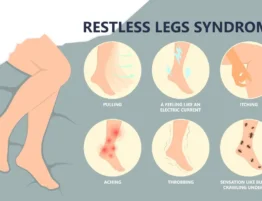

The ankle joint is a very important joint that allows you to have proper mobility. When it starts hurting for no apparent reason and it’s slowing you down, you’re very likely feeling frustrated. You’ll start to wonder what I did and what can be done about it. In this blog I’ll give you some incites as to what the pain could be coming from. In many situations its it could be related to overuse but in other situation it may not be. This is why we think there should be a discussion about “ankle pain without injury?”, because this may stop a person from getting back to regular activities due to lingering joint issues.
The ankle joint– The ankle joint is one of the most important joints in your feet and ankles for normal ambulation. It’s the primary joint in the foot that allows the foot to move up and down which is very important for walking, running, and a multitude of activities. It has various ligaments and tendons around it that help to stabilize the joint and support your weight on the joint. The primary foot bone that sits inside the ankle between the tibia and fibula is called the talus. It is thought to be the hardest bone in your body. Why? Because all your body weight has to be placed on this small surface area of bone. Imagine how much wider your knee joint is compared to your ankle joint and you’ll begin to appreciate the strength of this bone inside the ankle joint.
Common causes of ankle pain
Problems associated with overuse or trauma
Osteoarthritis – another name for this is degenerative joint disease. This can occur for two reasons
- Overuse – from years of activities that can cause damage to the joint, the wear and tear that will come over time
- Trauma- old ankle injuries which may include a history of multiple ankle sprains. Every time you sprain your ankle there is the potential for damage to the cartilage inside the ankle joint. This repeated damage over time can create osteoarthritis state. This can then create joint pain.
- Ankle fractures – If you have a history of an ankle fracture this can increase the likelihood of arthritis in the joint. In some cases, surgery may have been performed to reposition the bones in proper alignment and because of this the joint alignment may not be as precise as it was before surgery, and this may lead to more wear and tear to the joint cartilage over time.
- Flatfeet – The type of foot you’re born with may also lead to ankle pain. If you have a foot that overpronates, flattens, this may also cause pain in the ankle joint. A flatfoot can lead to more wear and tear on the ankle. It may also lead to other problems including Achilles tendon pain which would cause pain behind the ankle. Achilles tendonitis would make the tendon painful to touch and may cause swelling. Another tendon that helps support the foot and ankle is called the posterior tibial tendon. It is located around the inside of the foot and ankle and may also get overused because of the flatfoot. This can cause pain and swelling on the inside of the ankle joint.
Problems not caused by overuse and trauma
- Gout – Sudden ankle pain without injury can be from gout. The pain from gout can be very severe and can come on very quickly for no apparent reason. The ankle will become swollen, and heat and redness will be associated with it. The affected ankle will feel warmer to touch than the opposite ankle and will look more red. Gout can often be mistaken for an infection. Gout occurs as a byproduct of protein metabolism. Uric acid is a byproduct of that metabolic process. When Uric acid gets into a joint it’s recognized as being foreign to the body’s immune system. So, your body’s immune system begins to attack these uric acid crystals in the joint as if the crystals were bacteria. A medication called Indocin is frequently used to treat acute attacks. If the gout attacks keep returning further workup may be necessary to see if there is a related medical cause and potentially the use of medication to lower Uric acid levels in the body may be recommended.
- Autoimmune disease – These may include rheumatoid arthritis and Lupus. An autoimmune disease will create inflammation to the ligaments and joint capsule around the ankle joint. This may also cause damage to these soft tissue structures leading to less support for the join and ultimately damage to the joint cartilage. With an autoimmune disease your body’s immune system will attack and damge these soft tissue structures. Medications are frequently needed to treat these conditions.
- Ganglions – This is soft tissue fluid filled sacs that may originate from the ankle joint or from tendons sheaths around the ankle. If painful these are treated with aspiration of the fluid from the sac or surgical removal.
What can be done about ankle pain without injury?
If you find yourself experiencing ankle pain, consider some of the following suggestions.
- If it’s very sudden and your ankle feels hot and looks red get immediate medical attention as most likely this may be a gout attack.
- If there is no redness of heat consider RICE, rest, Ice, compression and elevation. You may also consider using non-steroidal anti-inflammatories NSAID, which may help.
- If you have flat feet you may want to consider more support shoes or consider over the counter arch supports.
- If the pain persists with your attempts, then consider seeing your podiatrist
What will a podiatrist do?
It starts with a good medical history from you as this can give us good insight into what it may be. X-rays and diagnostic ultrasound to look at the joint and the soft tissues around the joint may be needed. Examination of the foot and ankle by itself can tell us a lot simply by the appearance and location of the ankle pain without injury.
Options we consider
- Orthotics– custom made arch supports may be recommended especially if the problem is related to flatfeet. Also, this treatment can be helpful if the joint is getting osteoarthritis from previous trauma, overuse or autoimmune diseases.
- Regenerative medicine treatments- this involves using what is now referred to as human cellular tissue products. Currently we use umbilical cord or placenta cell products. These are injected into the joint in a clinic setting. Minimal down time is needed and there is minimal discomfort. This is usually a one-time treatment and we have had great success in helping with pain and prevent ankle surgery.
- Laser treatment- MLS laser treatment can also help reduce the pain and inflammation in joint and surrounding soft tissues.
- Surgery – This usually involves ankle scope surgery. Two small incisions are made to access the joint and through these incisions the joint and its structures can be visualized and damaged cartilage or soft tissue removed. Usually, you can get your foot wet within a few days and can bear weight within a few days. You can return to full activity relatively quickly with this technique. It’s also useful to have this done early if ankle arthritis is severe enough that ankle replacement surgery could be a consideration in the future.
I hope this blog eliminated some of the confusion that can happen when your ankle hurts without an injury.









Write a comment: